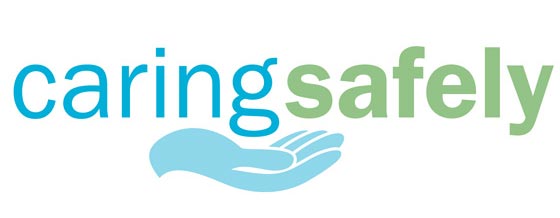Clarifying questions. 3-way Repeat-Backs. S.T.A.R. Cross-check.
More staff members across UHN are attending the Caring Safely Education Sessions and learning about the organization's new Safety Behaviours and Error Prevention Tools, which make up the toolkit to empower staff in our efforts to reduce preventable harm.
The education sessions are the starting point: introducing staff to the tools and providing examples on how to use them. But, as the session teaches, "practice makes habits" and it's committing to using the tools that will help reinforce their everyday practicality and support clear communication among staff in a way that everyone recognizes.
So what are some of the ways we can put these tools into practice?
October is ...

Month
Anne van Deursen, Nurse Manager for 9A Fell at Toronto Western Hospital (TWH), and her unit's leadership team decided to incorporate an Error Prevention Tools discussion at the end of their regular Safety Huddles that take place twice a day on the unit. All the unit's staff had attended the Caring Safely Education Session, and the team had talked about different ways they could help staff use the tools.
"Repetition helps people learn – you either use it or lose it," says Anne. "We were already using these tools in some shape or form, but this focused discussion helps staff name the tool, become familiar with it and be purposeful about using it."
Discussion on 'tool of the day'
"We were also noticing issues coming up during our Safety Huddles, but we weren't using them as an opportunity to identify which tools could be used to resolve them," she adds.
Everyday, the team chooses a different tool, for example S.T.A.R. (Stop, Think, Act, Review). A volunteer is asked to lead a discussion about the tool of the day by first reviewing it and then providing an example of how they use it in their work life.
"We wanted the staff to feel comfortable using these tools," says Exene Saha, who is one of 9A's two huddle leaders and a registered nurse along with Raman Sidhu. "In nursing, we are familiar with SBAR (Situation, Background, Assessment, Recommendation) through patient care, but the other tools were really new to us.
"The group discussion is less pressure and staff can become familiar with the different acronyms and tools in a fun way."
"Our Safety Huddles are also inter-professional so we have a wide range of stories on how to use the tools that are shared," adds Anne.
The discussions were implemented in mid-September and the unit has already seen increased use of the tools among staff. They have also started to talk about their issues during Safety Huddle by underlining how the tools can resolve some of them.
Further reinforcement has come from providing all staff with the Safety Behaviours badge so they have the tools handy, and acquiring the Phonetic and Numeric laminated cards to post by phones. The summary sheet of the Safety Behaviours is also posted next to the unit's Safety Huddle Board.
"This format is working well and we aim to continue the daily practice of these tools," says Sue Cheng, 9A Patient Care Coordinator. "It's great that we work with a very involved team and people want to participate."
